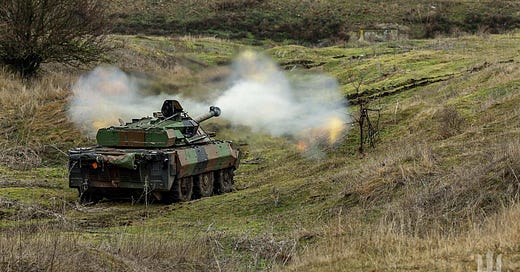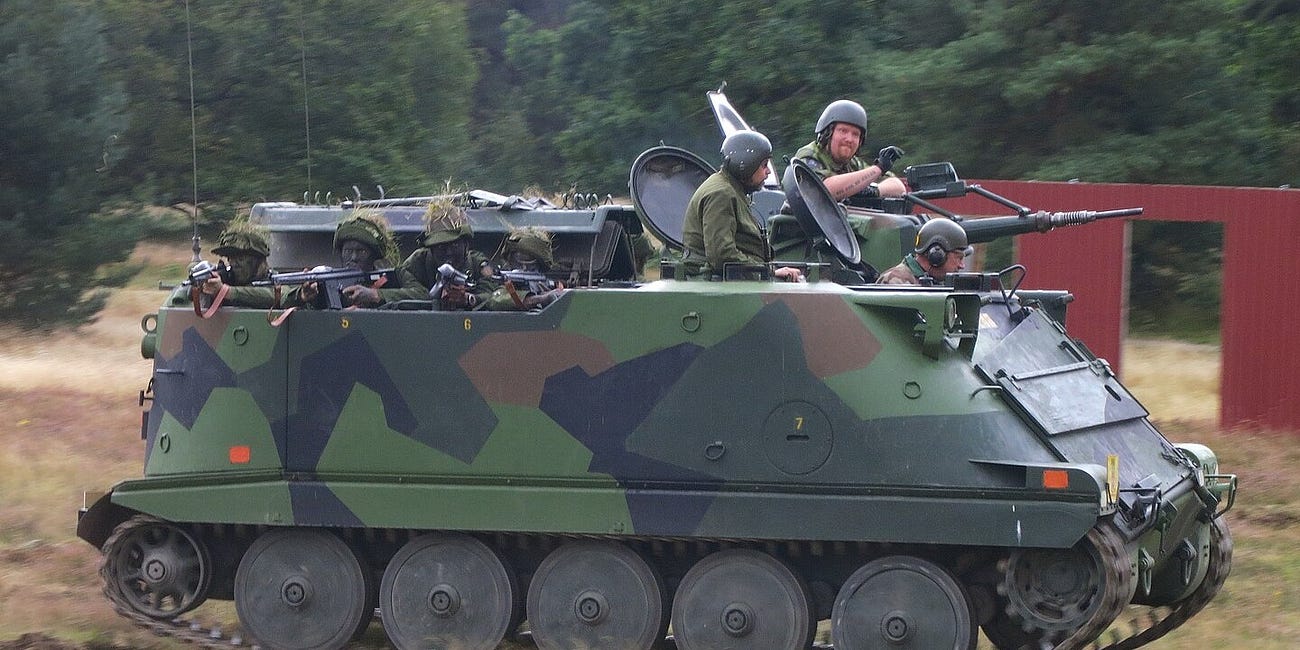The Ukrainian Marine Corps' AMX-10RC Recon Vehicles Have Become Night-Shooting Artillery
The 15-ton vehicles suffered heavy losses in the direct-combat role
The Ukrainian marine corps’ French-made AMX-10RC reconnaissance vehicles have had a hard war. The 15-ton, six-wheel vehicle with its four crew and unstabilized 105-millimeter main gun was meant to probe enemy positions—firing a few rounds to provoke a response and then speeding away.
It wasn’t meant for direct assaults on enemy positions. Its protection is much, much too thin for that: just a few tens of millimeters of aluminum, compared to the hundreds of millimeters of steel and composites that protect most tanks.
But the AMX-10RC kind of looks like a tank. And looks can be deceiving. In the early days of Ukraine’s southern counteroffensive a year ago, inexperienced commanders in the 37th Marine Brigade deployed their 38 AMX-10RCs as though they were tanks.
It should come as no surprise that the 37th Brigade lost a lot of AMX-10RCs, fast, in the initial assaults that kicked off the counteroffensive. According to Oryx, four of the vehicles were destroyed, abandoned or captured. Seemingly all them in the span of a few days in early June 2023.
At least 34 AMX-10RCs remain, however—and they’re still in action. Not as tanks or even as recon vehicles, per se, but as artillery. A video the 37th Brigade posted online on Friday depicts some of the vehicles in action at night along the right bank of the Dnipro River in southern Ukraine, where the 37th Brigade has been fighting a cross-river battle since late last year.
The video depicts the AMX-10RCs firing shots from prepared positions, their guns angled high for maximum range—potentially five miles or so. “The calculation of the light armored car AMX-10RC destroys the locations of the Russian occupiers on the left bank of the Kherson region with several well-hit shots,” the brigade wrote. “The most dangerous predators hunt the enemy at night.”
The demand for artillery essentially is limitless on both sides of Russia’s wider war on Ukraine, so if the Ukrainians or Russians have a vehicle they can use for indirect fire, it’s safe best they’ll at least try the vehicle in that role. Most tank types on both sides spend much of their time firing indirect shots at enemy positions miles away.
What’s special about the AMX-10RC compared, to say, the Russian T-62 tank—another type that often doubles as artillery—is that the AMX-10RC can fight at night. “The guns are good, the observation devices are very good,” one Ukrainian marine major a marine major told AFP.
As a bonus, the AMX-10RC fires 105-millimeter rounds that are less in-demand than are the 155-millimeter rounds that most of Ukraine’s Western-made howitzers fire. When Ukrainian artillery batteries fell silent starting late last year—the consequence of Republican lawmakers in the U.S. Congress withholding further U.S. aid to Ukraine between October and April—it’s possible the AMX-10RCs kept blasting away.
It took those hard losses last year to teach the Ukrainian marine corps how to handle their AMX-10RCs—but to their credit, the lesson stuck. We should expect never again to see Ukrainian AMX-10RCs rolling out for direct assaults on Russian positions. We should expect them to continue lobbing shells at the Russians from miles away, at night.
Read more:
Sweden Is Giving Ukraine Every PBV 302 Armored Personnel Carrier It Has. Potentially Hundreds of Them.
The massive, $1.25-billion aid package that Sweden pledged to Ukraine on Wednesday includes every single decommissioned Pansarbandvagn 302 armored personnel carrier the Swedish army still has in storage. Potentially more than 200 vehicles, according to






